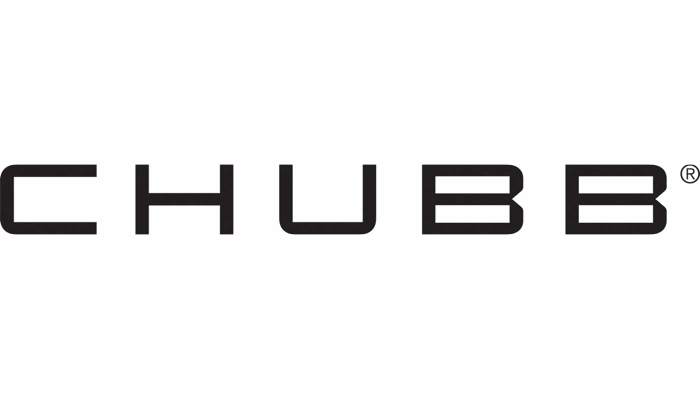Chubb lifts top of US property cat reinsurance tower 62% to $5.7bn

Chubb has seen a further significant increase in the amount of retained catastrophe losses it will need to bear in the United States under its global property catastrophe reinsurance tower, as the US retention has increased by 59% and the company has significantly expanded out the top-layers of cover instead, with a core focus on named storms and earthquakes.
Chubb renews its global property catastrophe reinsurance tower for its North American and International operations at April 1st each year.
At its 2024 renewal, Chubb has adjusted the structure of its US property catastrophe reinsurance tower, opting for a much higher retention of losses, but building it out significantly in the upper-layers.
The result is a program that now covers US catastrophe reinsurance losses up to $5.7 billion for named storms and earthquakes, compared to the 2023 tower which exhausted for all perils at $3.5 billion.
That’s a 62% uplift in where Chubb’s US property catastrophe reinsurance exhausts, year-on-year.
But, at the same time, Chubb will retain 59% more in losses at the bottom-end, as the reinsurance now does not attach until a retention of $1.75 billion is used up, far higher than the $1.1 billion retention Chubb had in-place last year.
There’s been an overall change in how Chubb structures its global property catastrophe reinsurance tower, beyond just the increased retention and higher limits being purchased at the top-layer end.
A year ago, Chubb had a three-layer approach for the United States, with reinsurance coverage for all natural perils and terrorism beginning at $1.1 billion in losses, then spanning three layers running to $3.5 billion that all covered US wide losses except Alaska and Hawaii.
For 2024, Chubb began making its changes back last September, when the company bought an additional layer of per-occurrence reinsurance coverage for named windstorms and earthquake events across Northeast US states. That new layer attaches at $3.5 billion and exhausts at $4 billion, while it matures at the end of August 2024 so presents a rare mid-wind season renewal opportunity, or challenge, whichever way you look at that.
With the higher retention, Chubb’s all natural perils and terrorism cover for the United States (ex. Alaska and Hawaii) now begins at $1.75 billion, with a first layer extending to $2.85 billion.
There is then a second layer that sits above that, but extends to $4 billion in losses.
So overall, having had all natural perils and terror reinsurance from $1.1 billion to $3.5 billion last year, Chubb has slightly less of this coverage for 2024.
But, after a $4 billion attachment, Chubb now has a US-wide named storm and earthquake reinsurance cover that extends from $4 billion attachment to cover losses up to $5.7 billion, with the northeast specific layer bought in September sitting alongside as additional cover for that region.
In addition to the higher-attaching and restructured US property catastrophe reinsurance tower, at April 1st 2024 Chubb also renewed its international property cat coverage.
The attachment point for Chubb’s international property cat reinsurance has risen again, from $200 million last year to now $225 million.
As a result, the first layer of international coverage now attaches at $225 million and covers Chubb to $1.325 billion, while the second layer above that which only covers losses in Alaska, Hawaii and Canada runs from $1.325 billion to $2.475 billion.
So Chubb’s international property cat reinsurance has just all shifted up by the $25 million in additional attachment point, this year.
All layers are fully-placed with reinsurers and there are insuring arrangements between the US northeast only reinsurance and US-wide layers.
So, for 2024, Chubb has more reinsurance in-force, but in the top-layers, with much more in losses set to be retained in the United States from any major catastrophe loss events that occur.
As ever, we don’t have visibility of how quota shares between Chubb and its third-party capital supported reinsurer ABR Re are structured, but it’s likely ABR Re fills in some of the coverage gap for the insurer.
ABR Re gives Chubb an efficient way to optimise its reinsurance buying and we suspect it is playing an increasing role here for the company, as ABR Re has been growing in recent years.
It’s always interesting to look at how protection plays against risk, by seeing how Chubb’s modelled probable maximum loss (PML) disclosures may have changed.
For this year, the 1-in-100 worldwide annual aggregate loss has risen from $5.197 billion to $5.282 billion, but importantly that is down from 9.8% of shareholders equity, to 8.7% of shareholders equity this year, reflecting Chubb’s strong growth.
On US hurricane risks, Chubb’s 1-in-100 year aggregate PML is now estimated at $3.636 billion, up from last year’s $3.477 billion, with is 6% of shareholders equity, down from 6.6% last year.
Finally, the 1-in-100 California earthquake single occurrence PML is now $1.874 billion, or 3.1% of shareholders equity, which is up from $1.392 billion and 2.6% last year.
So, Chubb has opted to be better protected for hurricanes and worldwide aggregate losses, while leaving itself a little more exposed to California quakes, but the much higher retention on the US property catastrophe reinsurance placement has not made a particularly significant difference it seems, as Chubb continues to manage its exposure effectively alongside its growth.






